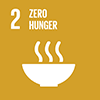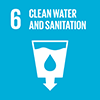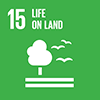Description
NATIONWIDE RAIN WATER MANAGEMENT PROGRAMS. If there is 1 inch of RAINFALL in 1 SquareMeter PLANNED CATCHMENT area, We get around 25 Liters of WATER which can be easily Stored, Recharged.
Let's CALCULATE the potential CATCHMENT AREA of the PLANET and calculate the AVAILABILITY of WATER; after each inch of RAINFALL in CATCHMENT. The Area of land: 148326000 km2 on Planet Earth. IF We can CONVERT 1% of TOTAL AVAILABLE LAND area as a CATCHMENT of RAIN and SNOW FALL it COMES to 1483260 km2.
NOW APPLYING above CALCULATION by assuming Average Global RAIN / SNOW FALL as 10 inches per year (Actual RAINFALL is 3.5 times greater) in the worst Condition.
THAT IS (1 inch rainfall * 1 Square meter * 25 liters ) = {10 * 14832600000000 * 25 } = [ TOTAL 3708150000000000* Liters ] which is 8 times more than our TOTAL GLOBAL WATER PULLING EACH YEAR (4 Trillions CBM).
Expected impact
RAIN WATER MANAGEMENT is a SINGLE TOOL to address : 1. Global Warming, 2. Increasing Planets Temperature, 3. GREEN House Gases Emissions, 4. Water Crisis, 5. TRANSBOUNDARY WATER CONFLICTS, 6. FOOD FOR ALL, 7. WATER FOR ALL, 9. RENEWABLE ENERGY, 10. CLEAN AIR FOR ALL, 11. BETTER AQUACULTURE with SUSTAINABILITY.
Results can be achieved by RAIN WATER MANAGEMENT : 1. “ FREE FLOWING” Main RIVERS of the Nation throughout the year resulting in better Aquaculture conditions as STORAGE of WATER for IRRIGATION & INDUSTRIES in DAMS can be released. Which will lead to LESSER AQUA POLLUTION along with lesser damages to fisheries lives, 2. Reduced cost of Irrigation, Industries & domestic SUPPLY of WATER up to 60%. ( By all means of energy, Money, Manpower ) leads to CLEAN WATER FOR ALL, 3. Increased Capacity of Hydro Power Projects as STORAGE of WATER in DAMS is not required as before. It will also open ways of MAKING OLDER DAMS AQUA CULTURE FRIENDLY & DEVELOPING NEW AQUACULTURE FRIENDLY TRANSITIONAL DAMS and other innovative ideas which may lead to cheaper renewable electricity with extra Incomes for the States, 4. Increased Productivity; variety of Farmlands due to in house water resources at lesser energy Consumption leads to FOOD SAFETY, 5. Less carbon & other chemical gases emissions by Thermal, fossil fuels, Nuclear Power plants due to Increased capacity of Hydro Power plants leads to CLEAN AIR FOR ALL, 6. Sufficient Water availability throughout the year for all purposes i.e irrigation, industries & domestic usages with energy efficiency, 7. Better quality & quantity of water in Ground Water tables (Aquifers) within the BOUNDARY & TRANSBOUNDARY leads to lesser TRANSBOUNDARY CONFLICTS within Neighbouring NATIONS internationally, 8. Reduction of Coal mining / fuel drilling results on GLOBAL WARMING & CLIMATE CHANGE are known to all of us, 9. RESTORATION of WETLANDS, PETLANDS & MANGROVES can be achieved easily, 10. MANMADE Disaster like ARAL SEA and other WATER BODIES LOSSES can be RESTORED.
Website
http://rainwaters.org/
Goal 2
2.1 - By 2030, end hunger and ensure access by all people, in particular the poor and people in vulnerable situations, including infants, to safe, nutritious and sufficient food all year round
2.3 - By 2030, double the agricultural productivity and incomes of small-scale food producers, in particular women, indigenous peoples, family farmers, pastoralists and fishers, including through secure and equal access to land, other productive resources and inputs, knowledge, financial services, markets and opportunities for value addition and non-farm employment
2.4 - By 2030, ensure sustainable food production systems and implement resilient agricultural practices that increase productivity and production, that help maintain ecosystems, that strengthen capacity for adaptation to climate change, extreme weather, drought, flooding and other disasters and that progressively improve land and soil quality
Goal 6
6.1 - By 2030, achieve universal and equitable access to safe and affordable drinking water for all
6.2 - By 2030, achieve access to adequate and equitable sanitation and hygiene for all and end open defecation, paying special attention to the needs of women and girls and those in vulnerable situations
6.3 - By 2030, improve water quality by reducing pollution, eliminating dumping and minimizing release of hazardous chemicals and materials, halving the proportion of untreated wastewater and substantially increasing recycling and safe reuse globally
6.4 - By 2030, substantially increase water-use efficiency across all sectors and ensure sustainable withdrawals and supply of freshwater to address water scarcity and substantially reduce the number of people suffering from water scarcity
6.5 - By 2030, implement integrated water resources management at all levels, including through transboundary cooperation as appropriate
6.6 - By 2020, protect and restore water-related ecosystems, including mountains, forests, wetlands, rivers, aquifers and lakes
6.a - By 2030, expand international cooperation and capacity-building support to developing countries in water- and sanitation-related activities and programmes, including water harvesting, desalination, water efficiency, wastewater treatment, recycling and reuse technologies
6.b - Support and strengthen the participation of local communities in improving water and sanitation management
Goal 7
7.1 - By 2030, ensure universal access to affordable, reliable and modern energy services
7.2 - By 2030, increase substantially the share of renewable energy in the global energy mix
7.3 - By 2030, double the global rate of improvement in energy efficiency
Goal 15
15.1 - By 2020, ensure the conservation, restoration and sustainable use of terrestrial and inland freshwater ecosystems and their services, in particular forests, wetlands, mountains and drylands, in line with obligations under international agreements
15.2 - By 2020, promote the implementation of sustainable management of all types of forests, halt deforestation, restore degraded forests and substantially increase afforestation and reforestation globally
15.3 - By 2030, combat desertification, restore degraded land and soil, including land affected by desertification, drought and floods, and strive to achieve a land degradation-neutral world
15.4 - By 2030, ensure the conservation of mountain ecosystems, including their biodiversity, in order to enhance their capacity to provide benefits that are essential for sustainable development
15.5 - Take urgent and significant action to reduce the degradation of natural habitats, halt the loss of biodiversity and, by 2020, protect and prevent the extinction of threatened species
Staff / Technical expertise
FARMERS ARE GETTING CHEAPER & EFFICIENT SUPPLY OF WATER THROUGH BOREWELLS .
Staff / Technical expertise
Low Cost RAIN WATER HARVESTING Filters are becoming blessings for URBAN AREAS.
Staff / Technical expertise
More than 675 million liters of RAIN WATER each year, is getting recharged by Our Plans
Staff / Technical expertise
Small Rain Water Barages are creating stock of water's in Tribal India




 Start: 01 February, 2013
Start: 01 February, 2013 Completion: 31 December, 2030
Completion: 31 December, 2030